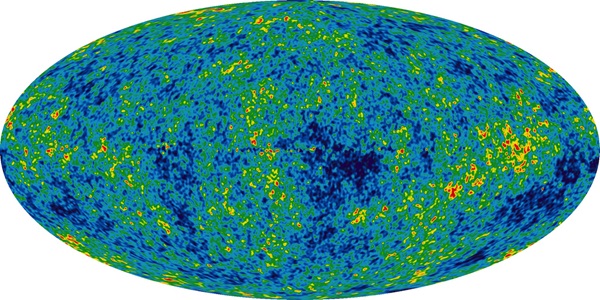Key Takeaways:
The cosmic microwave background (CMB) is the radiation allowed to freely propagate after the universe cooled enough for electrons to combine with atomic nuclei to form neutral atoms some 300,000 years after the Big Bang, or roughly 14 billion years ago. This CMB radiation was mostly in the form of near-infrared light, but the wavelength of the CMB light has been stretched by the expansion of space so much it now falls in the microwave range we see today. This expansion of the universe describes the phenomenon whereby the distance between any two points in space gradually increases over cosmic time. So, the CMB source is 40 billion light-years away and not 14 billion light-years away, as one might expect.
Observations of the CMB convert the light signal into a map of the relative temperature of the radiation. From Earth, we observe slightly hotter and colder spots in the CMB across the sky. We relate these to small (a few parts in a million) differences in the density of matter at that location at the time the CMB formed. Although higher density regions are considered the seeds for large-scale structures like galaxy clusters, individual locations of hot/cold spots in the observed CMB do not tell us anything particularly insightful. Everything we can learn about the CMB is encoded in the distribution of the numbers and sizes of these hot/cold spots.
The cosmological principle postulates that the universe, as a whole, is isotropic and homogeneous. Isotropy means that the universe appears statistically identical in every direction. While the CMB appears different at varying sightlines, the universe evolves in a uniform manner such that the CMB is the same distance in all directions. Homogeneity means that the universe appears statistically identical no matter where you are. The CMB will certainly appear slightly different from any distant galaxy, but the statistical distribution of hot/cold spots (and the cosmological information contained within) should be exactly the same.










